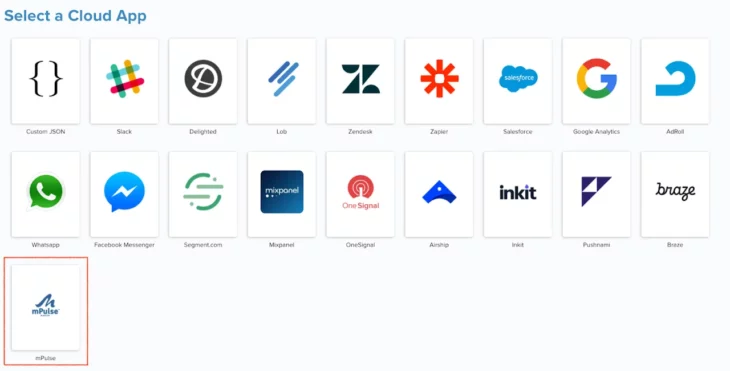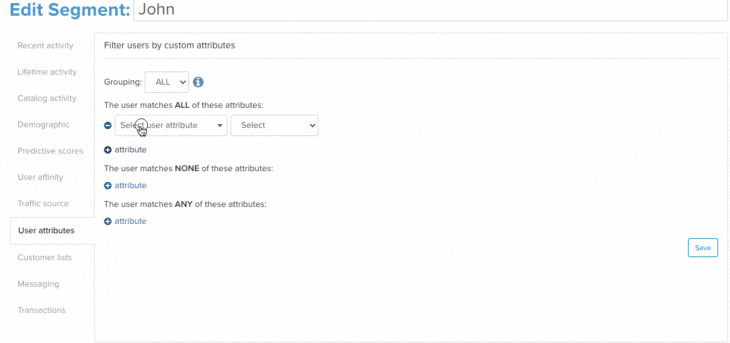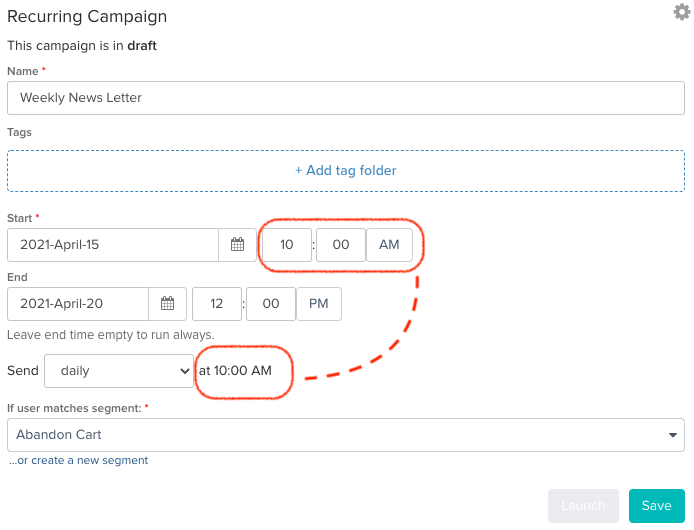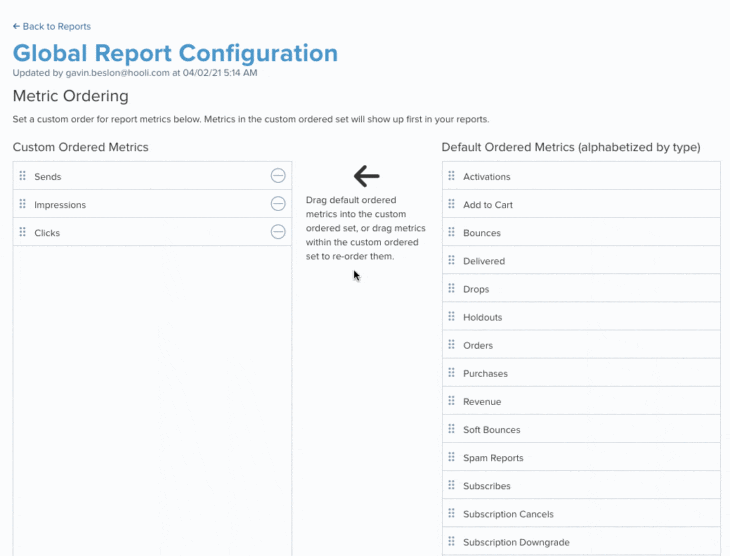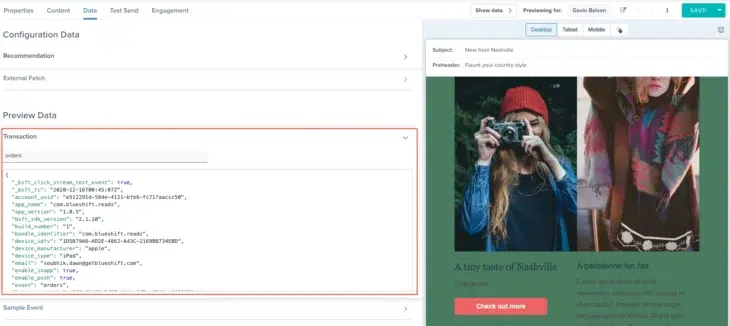04.06.21 AND 04.20.21
April Updates
04.20.2021
mPulse Integration for IVR
You can now trigger an outbound IVR (Interactive Voice Response) call through mPulse from a journey orchestrated in Blueshift’s Campaign Builder using the mPulse IVR cloud app.
To get started:
- Set up an IVR campaign in your mPulse account and gather information such as campaign ID, account ID, API username, and password from their support team.
- Create an mPulse IVR cloud app template in Blueshift. Go to Creatives and select Cloud App. Click on the ‘+Template’ button, select mPulse, and enter your account and campaign information. To set up the template, you’ll need customers’ phone number, first name, last name.
- Once the mPulse IVR template is configured, you use it when creating campaigns within Blueshift to trigger an outbound IVR call in real time.
04.20.2021
Autocomplete Attributes
To minimize the risk of incorrectly defining segment and campaign trigger criteria and to save you time, we now support autocompleting values of specified transaction, event, and user attributes. Now you can define your segmentation or campaign trigger criteria without having to manually type in the exact value. In the Segment Builder and in Trigger Filters, as you start typing the attribute, we will display a list of possible values matching your text based on the most recent data for you to choose from.
As an example, if your segment criteria includes a user’s city, when you select the attribute ‘city’, you will see a list of cities from your customer data. If you were looking for San Francisco users, and you type in ‘San’, you will see all cities matching ‘San’ independent of whether it is in upper or lower case. If your customer data has ‘San Francisco’ represented as ‘san francisco’ or ‘San_francisco’, you will no longer need to remember the exact nuance. All you will need to do is select the value(s) from the autocomplete dropdown.
Please reach out to your CSM to enable this feature. You will need to provide them with the list of attributes that can be autocompleted.
04.20.2021
Recurrence Time in Recurring Campaigns
To save time in campaign setup, Blueshift will now infer the recurring send schedule of recurring campaigns based on the start time and the recurrence frequency. You’ll no longer need to input two different times, one for starting the campaign and the other for the campaign execution.
For example, if you have a campaign start time of ‘10 AM, April 15, 2021’ and a daily recurrence frequency, the first send will be at 10 AM on April 15, the next run will be at 10AM on April 16, the next at 10 AM on April 17, and so on.
04.20.2021
Updated Android and iOS SDKs
We’ve released updates to our Android and iOS SDKs, including:
- To help opt-in or opt-out a user from in-app messages, we’ve added support to enable or disable in-app messages. We’ve also added a utility method to enable or disable push or in-app messages in both SDKs.
- To improve the in-app user experience, we’ve added support to dismiss slide-in banner notifications with a swipe gesture. This is supported in both SDKs.
- We’ve enhanced user information settings by adding extra attributes to the BlueshiftUserInfo class. You can now also override default SDK attributes in iOS SDK.
- The iOS SDK will no longer be collecting IDFA automatically. The host app has to pass the IDFA value to our SDK to set that in Blueshift.
For more information about the Mobile SDKs refer to Android documentation or iOS documentation.
04.06.2021
Reorder Columns in Reports and Dashboards
You can now customize the order in which metrics are listed in your Insights reports and the campaign dashboard screen. Navigate to Insights → Reports and click on the gear icon ( ⚙ ).
You can drag and drop to change the order in which core metrics, custom goals and compound metrics appear in the UI.
It is important to remember that any change you make is global for your account and will impact what other users see. Moreover, this change will be reflected in all Insights reports and the campaign dashboard- both in the UI and in any report you download from the UI.
04.06.2021
More Actions within Creative Studio
We have added a menu of actions that you can take on a template within the creative studio itself. Hence if you want to say clone or archive a template, you no longer need to exit the studio, go to the index screen and search for the template by name in order to do so. All you need to do is click on the ‘more options’ menu ( ⋮ ) next to the ‘Save’ button and choose the action you want to perform on the template.
You can refer to the user guides for our email, push, and SMS studios for more information.
04.06.2021
Transaction Replay Preview
When you’re searching for users in a transaction replay segment, the transaction object will now show up in the left panel of the data tab. It will thus make it easier to find whether the user has the transaction you’re looking for and the specific details of the transaction.
Transaction modeling is an advanced Blueshift capability that allows you to connect and segment lifecycle events/behaviors through a common identifier.
04.06.2021
Campaign Activity Report Enhancements
In order to help you measure the impact of pre-header text on your email campaign’s performance, we have introduced it as an extended attribute in the campaign activity report. You can thus set up 2 or more experiments with different pre-header texts and compare the conversions to determine the best option for you.
We have also added the recommendation algorithm ID as an extended attribute in the campaign activity report for all channels. This will help you measure the impact of a specific recommendation algorithm on your campaign’s performance or even compare the performance of 2 or more recommendation algorithms.
You can learn more about campaign activity report exports via S3 and via webhooks in our user guide.
04.06.2021
Criteo API Upgrade
As of April 1, 2021, Criteo has stopped supporting its legacy Marketing API. In order to guarantee continued support for our Criteo customers, we have upgraded our integration to use the latest version, the ‘Criteo API‘.
If you are an existing Criteo user, you will need to grant access to Blueshift for each of your Criteo advertiser accounts. Please reach out to your CSM or support@blueshift.com for the consent link. Once you grant Blueshift access to your Criteo account, everything will work as before. No other changes are required.
If you are a new Criteo user, you just need to follow the steps outlined in our Criteo integration guide.
